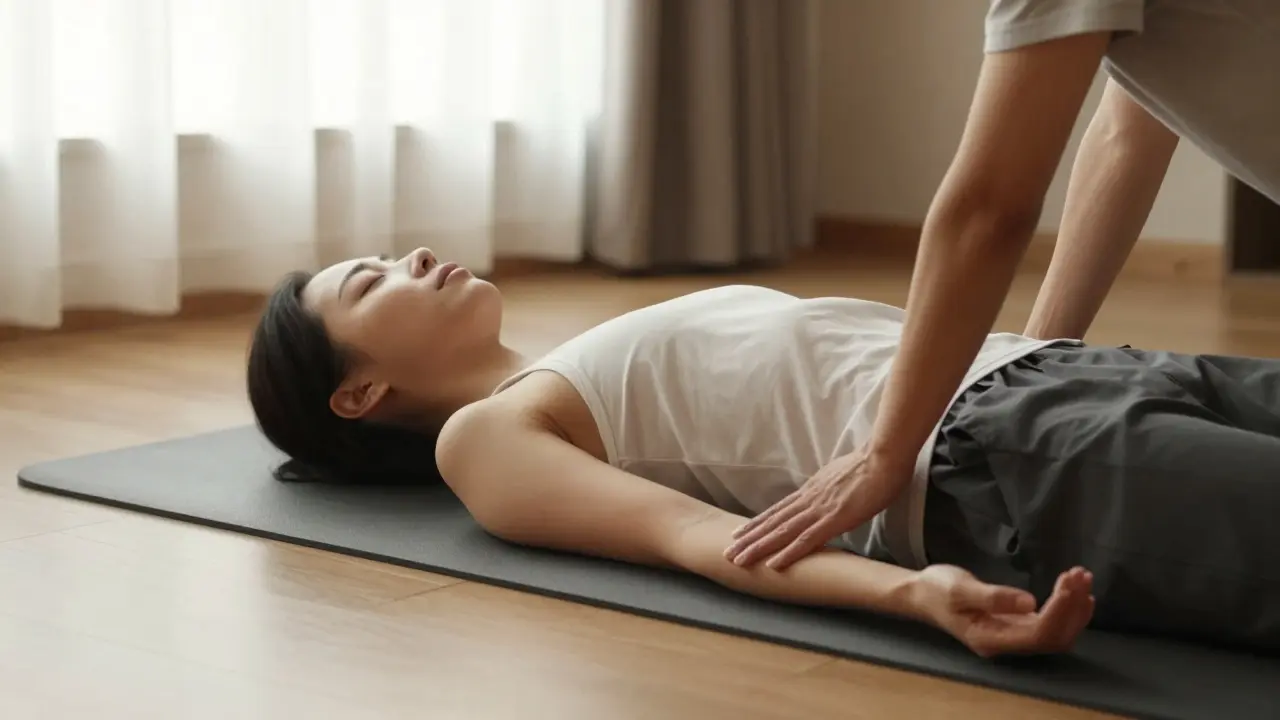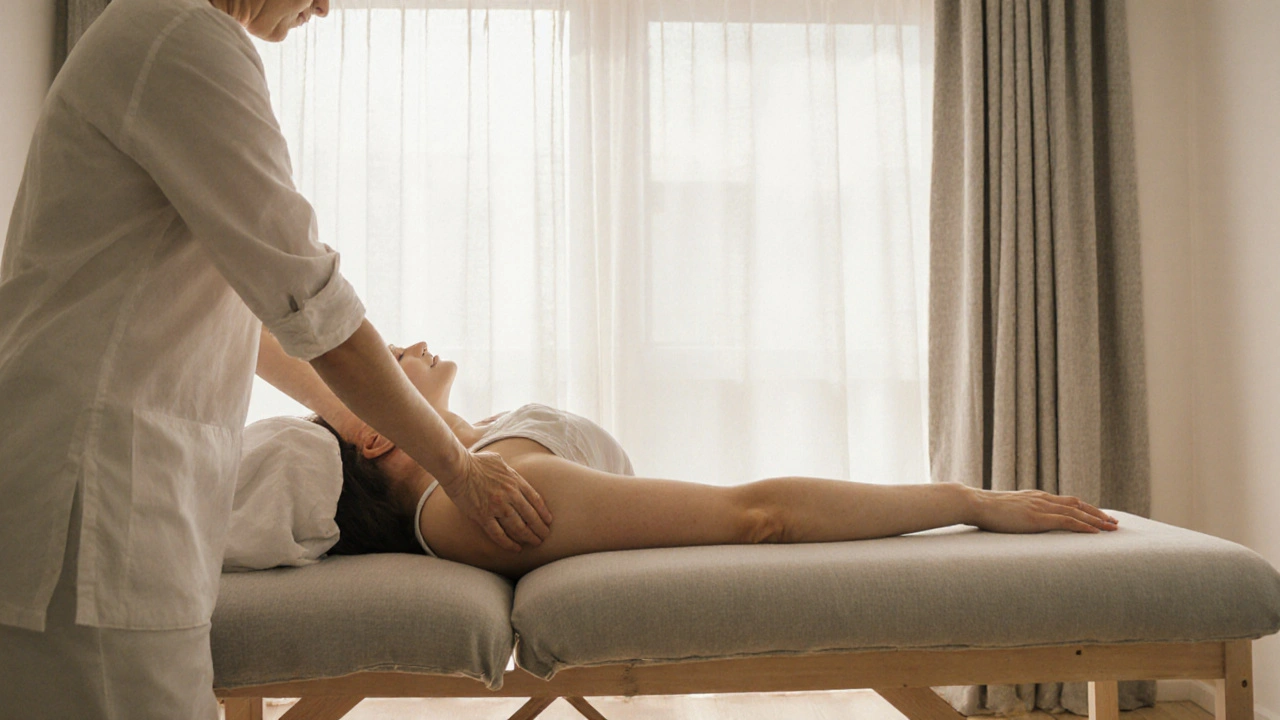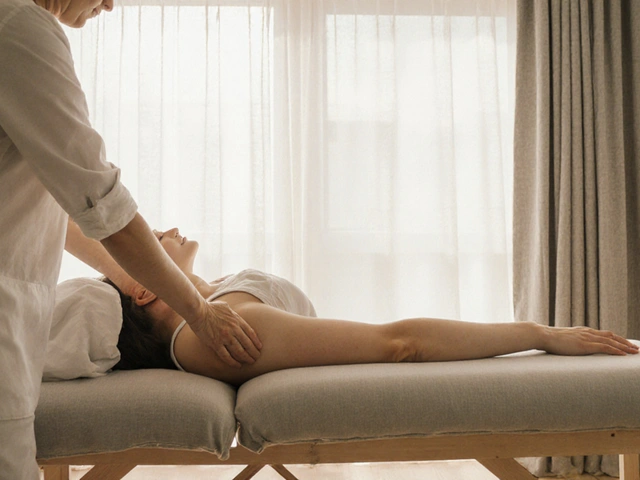Bodywork: Practical Guide to Therapies that Fix Pain and Restore Movement
Bodywork covers hands-on therapies that change how your muscles, joints, and nervous system feel and move. Think of things like Rolfing, Feldenkrais, Hellerwork, Amma, Hilot, Lomi Lomi, Ortho-Bionomy, acupressure, trigger point work, stone massage, cupping, and therapeutic touch. They do different jobs, but the goal is the same: better movement, less pain, and more ease in daily life.
Most sessions focus on one of three things: relaxing tight muscles, releasing stuck patterns, or teaching your brain new ways to move. Feldenkrais helps you learn easier movement. Rolfing and Hellerwork change your posture and alignment. Trigger point work and stone therapy ease specific knots and tension.
How to pick a bodywork session
Start with your goal. Do you need pain relief, posture change, stress relief, or better sports recovery? Ask the practitioner about training, experience, and any work with your condition. Check length, price, and what to wear. Tell them about surgeries, blood thinners, or recent injuries. If something feels wrong during a session, speak up right away.
What to expect in your first sessions
The first session often includes a short chat about history and goals. The therapist will use gentle tests and hands-on work to learn what needs attention. You might feel sore after a deep session. That soreness usually eases in 24 to 48 hours. Track changes in pain and movement so you can see what improves.
Watch for sharp pain, numbness, fever, or swelling. Those need medical attention. Avoid aggressive deep tissue work on inflammation. If you have cancer, recent fractures, or active infections, ask your doctor first. Good therapists will modify work to keep you safe.
You can try simple bodywork at home between sessions. Use a tennis ball for trigger points on your back. Press a few seconds, breathe, release, and repeat. Learn one Feldenkrais lesson or a short mobility flow to reduce stiffness. Try acupressure for headaches: press the space between your thumb and index finger for 30 seconds. Heat or warm stones can calm tight muscles before sleep.
Combine bodywork with movement. Short walks, targeted strength, and gentle stretching keep gains active. Frequency depends on need. Acute pain may need weekly visits. Maintenance often drops to monthly or every few weeks. Talk with your therapist about a plan.
This tag groups focused guides on techniques from gentle Feldenkrais to deep structural work. Read posts on Rolfing, Hellerwork, Hilot, Ortho-Bionomy, cupping, palliative care, and more to match a therapy to your needs. Try one clear article that fits your issue, then book a short session to test how it feels.
Start small. One session can change how you move. Keep notes, change one habit, and watch progress. If pain lasts despite care, see a doctor or specialist. Explore the articles on this page to find practical steps for relief and better movement.
Want quick help? Use the search box to find articles on specific techniques or body parts. Bookmark favorites and share what actually works with friends and keep checking for new posts weekly.

Breema: A Holistic Approach to Stress Management
Breema is a gentle, non-invasive bodywork practice that helps reduce stress by fostering presence and connection with the body-no effort required. Learn how it works, who it's for, and how to try it.

The Healing Touch: How Trager Therapy Restores Movement and Calms the Mind
Trager therapy uses gentle, rhythmic touch to retrain the nervous system and restore natural movement. Unlike massage or chiropractic care, it focuses on relaxation and awareness-not force. Many report lasting relief from pain, stress, and stiffness after just a few sessions.

Embrace the Power of Breema for Healthy Living
Breema is a gentle, no-effort bodywork practice that helps reduce stress, improve sleep, and reconnect with your body. Learn how this simple technique works and how to start today.

Ortho-Bionomy: A New Hope for Chronic Pain Sufferers
Ortho-Bionomy is shaking up how people deal with chronic pain, swapping harsh treatments for gentle, body-led movements. This article digs into what makes Ortho-Bionomy different and how it taps into the body's natural healing instincts. If you've tried everything from painkillers to deep tissue massages, this might just be the gentle breakthrough you’re looking for. Get ready for some real facts, plenty of tips, and some honest talk about what to expect. The hope here is simple: less pain, more freedom.

Discover the Transformative Power of Craniosacral Therapy
Craniosacral Therapy is an innovative approach to healing that involves gentle manipulation of the cranial bones, spinal column, and sacrum. This therapy aims to improve the flow of cerebrospinal fluid and enhance the body's natural healing processes. An increasing number of people are turning to craniosacral therapy for relief from chronic pain, stress, and various health conditions. By understanding its benefits and how it works, individuals can consider integrating craniosacral therapy into their wellness routines. This article explores what craniosacral therapy is, its roots, who it can benefit, and shares insights from practitioners.
Categories
- Health and Wellness (148)
- Alternative Therapies (86)
- Massage Therapy (40)
- Travel and Culture (15)
- Beauty and Skincare (9)
- Holistic Health (8)
- Health and Fitness (5)
- Spirituality (5)
- Other (2)
- Personal Development (2)
Popular Articles



